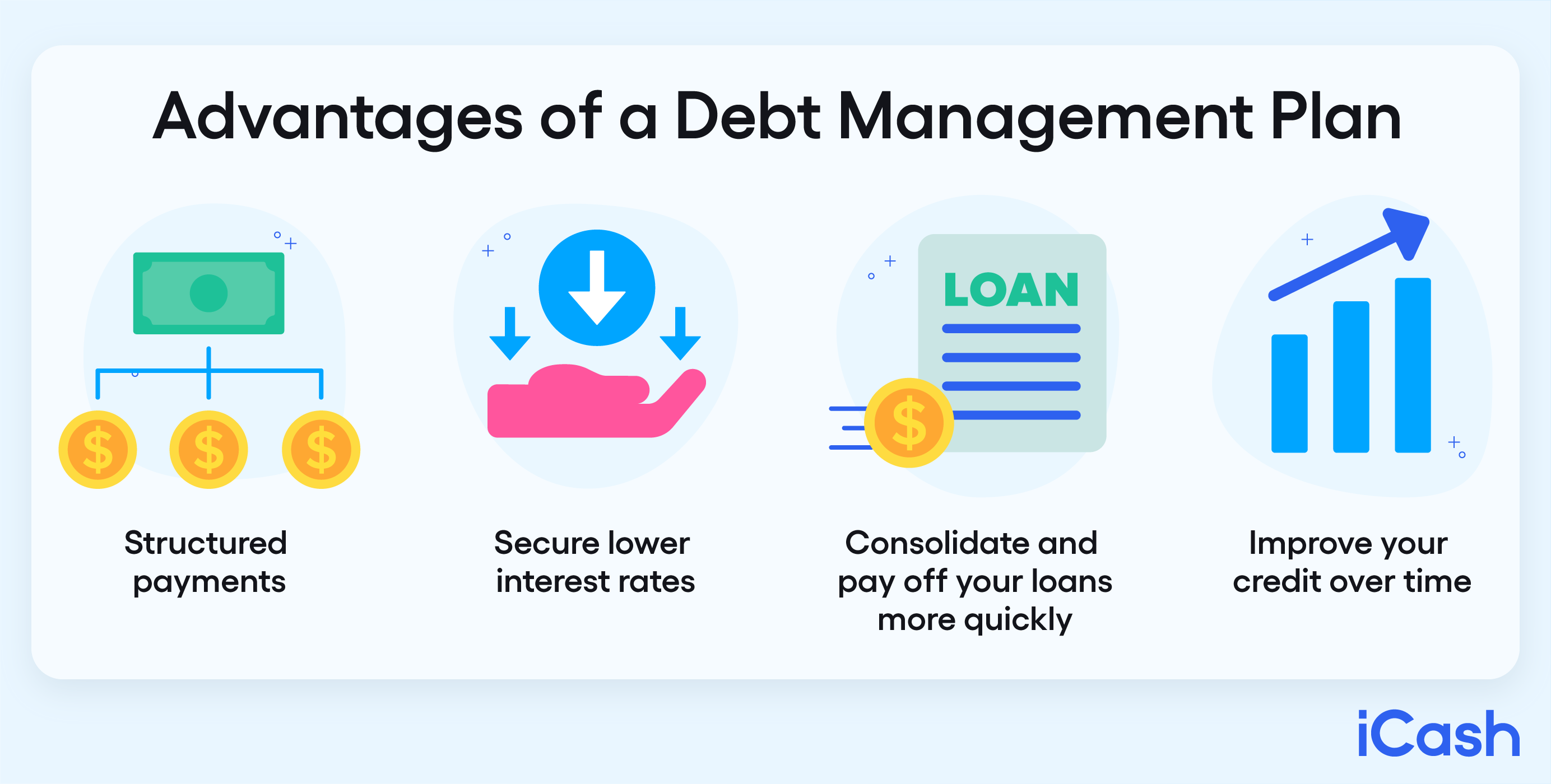Effective Financial Debt Combination Approaches for Financial Freedom: More Discussion Posted Here
Effective Financial Debt Combination Approaches for Financial Freedom: More Discussion Posted Here
Blog Article
Every Little Thing You Need to Understand About Developing a Tailored Debt Monitoring Plan
In the realm of personal money, creating a tailored debt administration strategy is commonly the foundation of attaining monetary stability and peace of mind. By thoroughly examining your existing monetary obligations, setting attainable monetary goals, and crafting a functional budget, you lead the way for efficient financial obligation payment techniques. Nonetheless, the trip to financial freedom is not only about preliminary planning; it likewise needs recurring tracking and adjustments to make certain continued development. As you navigate the complexities of producing a customized debt management plan, understanding the details of each step is key to your financial success.
Examining Your Present Financial Debt Situation
One should initially carry out an extensive evaluation of their existing financial obligation obligations before creating an efficient debt management plan. Produce a detailed list of each financial debt, consisting of the total quantity owed, rate of interest rates, minimal regular monthly payments, and due dates.
After compiling this information, compute your total debt-to-income proportion by separating your monthly debt repayments by your monthly income. Comprehending these facets of your economic situation will certainly guide you in establishing a personalized financial obligation management plan tailored to your particular needs and objectives.
Setup Financial Goals and Targets

When establishing monetary objectives, it is essential to be particular, measurable, possible, pertinent, and time-bound (WISE) As an example, you may set an objective to settle a specific quantity of debt within a particular timespan, such as lowering your credit rating card balance by $5,000 in the following twelve month - More Discussion Posted Here. By establishing clear targets such as this, you can track your development and remain encouraged to achieve your financial obligation administration goals
In addition, take into consideration prioritizing your financial debts based on aspects such as rates of interest, impressive equilibriums, and payment terms. By focusing on high-interest debts initially, you can conserve money over time and accelerate your trip towards financial freedom. Bear in mind, everyone's monetary scenario is unique, so tailor your targets and objectives to fit your private demands and circumstances.
Developing a Realistic Budget
Crafting a well-defined budget is a fundamental step in reliable debt monitoring and economic planning. A realistic budget plan offers as a roadmap for your financial health and wellness, helping you track your revenue, expenses, and financial obligation repayments. To create a practical budget plan, beginning by listing all your sources of revenue.
When setting spending plan limitations, be straightforward with on your own regarding your investing routines and financial obligations. Assign a part of your earnings towards paying off financial obligation while guaranteeing you have some funds for savings and emergency situations. Regularly review and change your budget as needed to remain on track with your economic objectives and debt payment plan. By adhering to a realistic spending plan, you can efficiently manage your debt and work in the direction of an extra secure financial future.
Exploring Financial Obligation Payment Methods
After establishing a realistic budget, the next vital action in efficient debt administration is to discover various financial debt repayment strategies. One common approach is the snowball technique, where you focus on repaying the tiniest financial debts initially while making minimal payments on bigger debts. This approach can assist build energy as you see smaller debts being gotten rid of, giving motivation to deal with larger ones.
An additional method is the avalanche approach, which involves focusing on financial debts with the highest possible rates of interest. By targeting high-interest debts initially, you can minimize the overall quantity you pay in rate of interest gradually. This technique might be extra economical in the future, despite the fact that it may take longer to see private financial obligations fully repaid.
Financial debt loan consolidation is another option where you combine several debts into a single financing with a reduced rates of interest. This can streamline your payment procedure and possibly minimize the complete rate of interest paid. Nonetheless, it's vital to carefully think about the terms and charges linked with consolidation to ensure click to find out more it's the right choice for your economic scenario.
Monitoring and Adjusting Your Plan

Adjusting your strategy may include reapportioning funds to deal with high-interest financial obligations first, negotiating with financial institutions for reduced rate of interest or far better settlement terms, or checking out extra income resources to quicken financial obligation settlement. As your monetary situation progresses, your financial debt monitoring plan must adapt as necessary to remain effective. By remaining positive and flexible in monitoring and readjusting your strategy, you can maximize your efforts towards settling your debts successfully and achieving your financial objectives.
Verdict
In verdict, creating a tailored financial obligation management plan includes analyzing present financial debt, establishing economic goals, developing a reasonable budget, exploring settlement approaches, and surveillance and readjusting the plan as required. By adhering to these steps, individuals can take control of their monetary scenario and job in the direction of ending up being debt-free. It is crucial to remain disciplined and dedicated to the plan in order to achieve long-term monetary security.
One should first carry out an extensive evaluation of their current financial visit their website obligation obligations prior to formulating an effective financial debt administration plan.After developing a sensible budget, the next important action in efficient financial debt administration is to check out various debt settlement strategies - More Discussion Posted Here.To efficiently manage your financial obligation, constant surveillance and change of your financial obligation management strategy are crucial parts for long-lasting monetary stability.Adjusting your strategy might involve reallocating funds to take on high-interest debts initially, working out with creditors for reduced interest rates or much better payment terms, or exploring extra income resources to expedite debt repayment.In verdict, developing a personalized financial debt monitoring strategy involves analyzing current debt, setting financial objectives, creating a reasonable spending plan, exploring payment strategies, and monitoring and adjusting the strategy as needed
Report this page